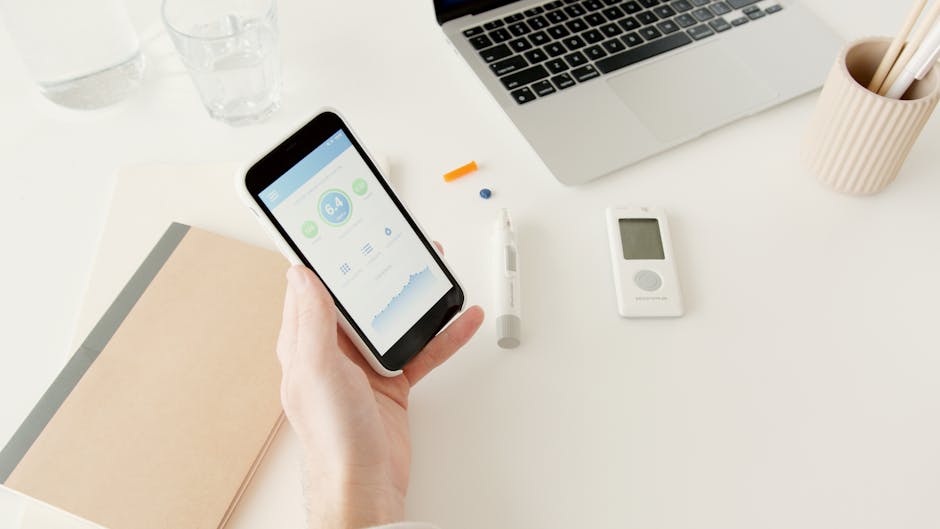
How Does Personalized Vagus Nerve Stimulation Work—and Can At-Home Devices Really Relieve Stress?
Share
What Is Personalized Vagus Nerve Stimulation?

Personalized vagus nerve stimulation (VNS) uses technology to deliver gentle electrical impulses to the vagus nerve, a major nerve pathway that connects your brain to organs throughout the body. This approach adapts stimulation levels and timing based on your unique biometric signals—like heart rate, breathing rhythm, and even EEG (brainwave) activity. The goal: to help balance your autonomic nervous system, reduce stress, and support overall wellness without medication.
The Science Behind Vagus Nerve Stimulation
The vagus nerve is a communication superhighway for regulating stress responses, digestion, mood, and inflammation. When stimulated, it shifts your body into a "rest and digest" state, activating the parasympathetic nervous system and counteracting stress hormones. Traditional VNS required surgical implants, but modern devices use non-invasive methods—often via the ear or neck—to make this therapy accessible for home use.
Personalized VNS is a step beyond generic protocols. It uses real-time biofeedback from your body (like heart rhythm or brainwaves) to synchronize the stimulation pattern with your unique biological rhythms. This bio-adaptive approach helps optimize results, reduce side effects, and avoid over- or under-stimulation.
Emerging Wearable Vagus Nerve Devices

A wave of wearable and handheld devices now brings this technology directly to consumers. Key brands include:
- Pulsetto: Budget-friendly transcutaneous VNS (tVNS)
- Nurosym: Medically approved auricular VNS (taVNS)
- Hoolest VeRelief Prime: Handheld option tested in placebo-controlled studies
- Neuvana: Convenient, app-connected ear-based stimulator
- Apollo: Vibrotactile wearable for stress and mood regulation
- Truvaga: Adjustable neck-wearable VNS with patented waveform technology
- Vagustim: App-controlled earset with bilateral activation and stress tracking
Each device offers different features—adjustable intensity, session length, targeted application areas, and integration with smartphone apps for tracking and personalization.
How Do At-Home Neuromodulation Devices Personalize Stimulation?
Recent models use sensors (often in the earset or as part of an app) to read your heart rate variability, breathing cycles, or even sleep phases. The device then adapts the stimulation to match your body's rhythms. For example:
- Cardiac-gated aVNS: Stimulation is timed to your heartbeat, modulating beat-to-beat intervals for maximum effect.
- EEG-gated aVNS: Stimulation synchronizes with brainwave patterns, especially during deep sleep phases, to enhance relaxation and recovery.
- Biofeedback loops: Devices track stress levels and automatically adjust session intensity or duration.
This closed-loop personalization aims to ensure more consistent benefits, minimize side effects, and avoid energy waste from unnecessary stimulation.
Steps to Use Wearable Vagus Nerve Stimulation at Home
-
Choose the Right Device
- Consult reviews and safety certifications (look for CE, FDA, or ISO marks).
- Consider your comfort preferences—earset, neck probe, or wrist wearable.
- Check for app integration and personalization features.
-
Set Up and Adjust
- Download the companion app (if available).
- Fit the device properly—most offer adjustable sizes for comfort.
- Complete baseline measurements (stress level, heart rate, etc.).
-
Start a Session
- Follow the recommended duration (often 15–30 minutes).
- Use biofeedback features to personalize intensity and timing.
- Relax in a quiet environment; avoid multitasking during stimulation.
-
Track Progress
- Monitor changes in stress, sleep quality, or focus via the app.
- Adjust session settings as needed—some devices suggest optimal times based on your data.
-
Maintain Consistency
- Use the device regularly (daily or as suggested).
- Review app insights to see trends and improvements over time.
Benefits and Cautions of Vagus Nerve Tech Wellness
Potential Benefits
- Stress reduction and emotional balance
- Improved sleep quality
- Enhanced focus and mood
- Support for heart rate variability
- Non-drug alternative for chronic stress
Sensible Safety Notes
- Check device certifications and clinical evidence before buying.
- Avoid devices if you have a pacemaker or serious heart condition—consult your physician first.
- Follow manufacturer instructions for session length and placement.
- Discontinue use if you experience discomfort, dizziness, or skin irritation.
Limitations
- Many devices rely on company-led studies; independent validation is still evolving.
- Effects may vary; not everyone will respond equally.
- Personalized VNS is promising, but not yet a substitute for professional care if you have mental health or neurological conditions.
Vagus Nerve Stimulation in Everyday Life
People using these devices often report feeling calmer, sleeping better, and handling stress more naturally. The integration of tech wellness into daily routines—whether during meditation, before bed, or after a stressful day—makes personalized neuromodulation accessible for many.
Frequently Asked Questions (FAQ)
1. What makes vagus nerve stimulation "personalized"?
Personalized VNS adapts stimulation patterns based on your own biometric data—such as heart rate, breathing, or sleep cycles—for more tailored and effective results.
2. Are wearable vagus nerve devices safe?
Most devices are non-invasive and certified for at-home use. Always check for FDA or CE marks, and consult your health provider if you have medical concerns.
3. How long do sessions take and how often should I use them?
Typical sessions last 15–30 minutes. Consistency is key; daily use may be recommended, but always follow the manufacturer's guidelines.
4. Can vagus nerve stimulation help with anxiety or depression?
Evidence suggests VNS may support mood and stress relief, but it is not a replacement for therapy or prescribed medication. Results vary.
5. What are the limitations of current at-home VNS technology?
Most research is company-led, though some devices have undergone clinical trials. Personalized effects are promising but not guaranteed for everyone. Professional guidance is advised for any serious health condition.
References
- Cybernews Editors (2025). Best Vagus Nerve Stimulation Devices in 2025. Cybernews. Available at: https://cybernews.com/health-tech/best-vagus-nerve-stimulator/. Accessed 2025-11-13.
- Yu, L. et al. (2024). Personalized auricular vagus nerve stimulation: beat-to-beat modulation and biofeedback. Frontiers in Physiology. Available at: https://www.frontiersin.org/journals/physiology/articles/10.3389/fphys.2024.1495868/full. Accessed 2025-11-13.
- Vagustim Team (2024). Vagus Nerve Stimulation (VNS) Device for Individuals. Vagustim. Available at: https://vagustim.io/products/vagus-nerve-stimulation-vns-device-for-individuals. Accessed 2025-11-13.
